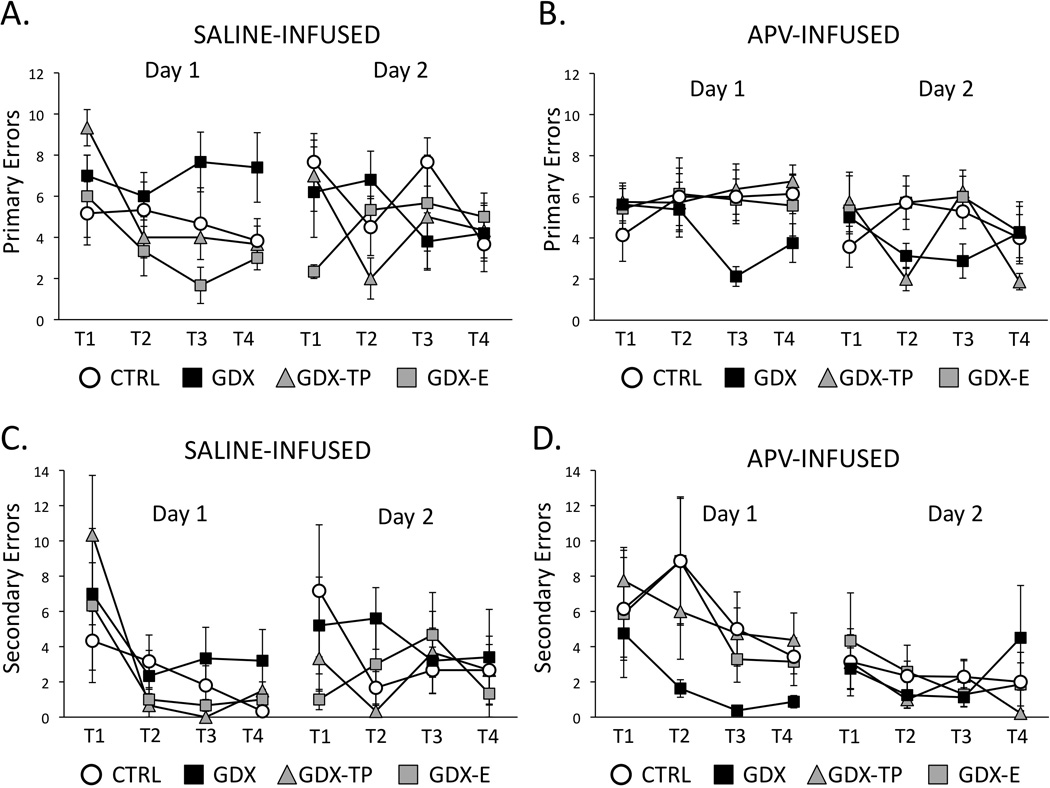Figure 4.

Line graphs showing average numbers of primary errors (A, B) and average numbers of secondary errors (C, D) committed during the four trials (T1-T4) of Day 1 (acquisition) and Day 2 (retention) testing for gonadally intact control (CTRL, open circles), gonadectomized (GDX, black squares), and gonadectomised male rats supplemented with testosterone propionate (GDX-TP, gray triangles) or estradiol (GDX-E, gray squares) that were infused with saline (A, C) or with APV (B, D) prior to Day 1 testing. Error bars represent standard errors of the mean. During Day 1 testing, the saline-infused CTRL (n =6), GDX-E (n=3) and GDX-TP (n=3) groups showed similar, consistent decreases in primary (A) and secondary (C) errors across trials, while GDX rats (n=5) continued to make more errors of both types. However, among APV-infused rats, the GDX group (black squares, n =8) consistent decreases in primary (B) and secondary errors (D) across Day 1 trials while the CTRL (n=9), GDX-E (n=8) and GDX-TP (n=10) groups continued to commit larger numbers of errors. Analyses of variance performed on error data identifying significant main effects of Group and of Trial and revealing significant differences in GDX compared to other hormone-treatment groups for both the saline and APV treated cohorts are described in the text. During Day 2 testing, the commission of primary and secondary errors was similar, low and consistent across trials among all saline (A, C) and APV-infused (B, D) groups. There were no significant main effects of Group or Trial among these data.
